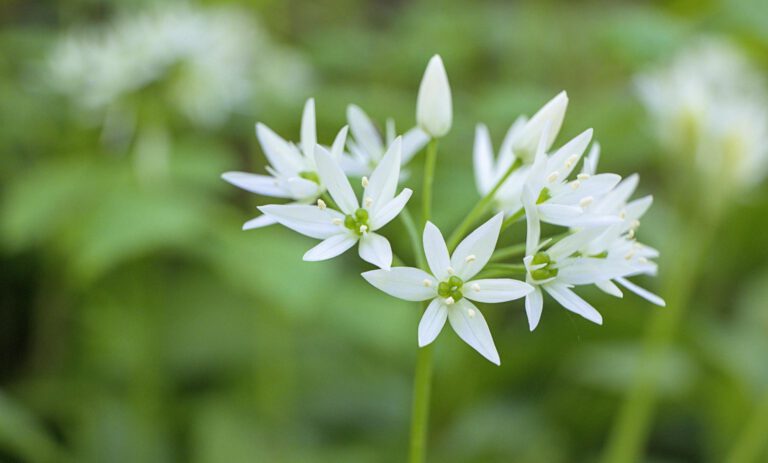Wild garlic – properties and uses
Contents:
Everyone knows the common garlic that we use almost every day in the kitchen, but what is wild garlic? Is it the same as the regular garlic that we use every day in the kitchen? Not quite - wild garlic , also called witch's onion or gypsy garlic, has many of the same beneficial properties as the more commonly known garlic, but also contains some additional and extremely valuable substances for our health. However, in terms of appearance, nothing resembles traditional garlic. It has the shape of long, lanceolate leaves that contain many health-promoting properties. Its flowers are white and spherical and give off an intense garlic smell (hence the name of this plant). The flowers contain harmful substances and are inedible. According to the Minister for the Environment's 2012 regulation, wild garlic is a partially protected plant and may not be picked in places where it grows wild. However, it can be cultivated. It is then sold in cultivation.
What properties does wild garlic have?
Wild garlic leaves are an extremely valuable source of vitamins A, C, and B, as well as minerals such as iron, magnesium , potassium, and phosphorus. Wild garlic is distinguished by its leaves' high content of sulfur compounds. These compounds have a very positive effect on the proper functioning of the digestive system. They support bile secretion and contribute to the maintenance of normal bacterial flora in the intestines. Another valuable ingredient in wild garlic is phenolic acids, which are extremely helpful in cases of infections, for example, and facilitate the expectoration of secretions. Wild garlic also contains:
- has a positive effect on the cardiovascular system,
- helps to lower blood pressure,
- helps to lower the level of bad cholesterol,
- protects against free radicals,
- supports the proper function of the liver,
- reduces the risk of blood clots,
- has strong antifungal, antibacterial, antifungal and antiparasitic effects.
Wild garlic can be used as a spice in the kitchen. It can be successfully added to soups, sauces, cheese, and meat dishes. Its leaves can be used instead of basil leaves to make an aromatic and healthy pesto .
Contraindications to the use of wild garlic
Wild garlic is not recommended in the diet of people with stomach ulcers. Also, keep in mind that you should never pick wild garlic yourself, not only because of the regulations partially protecting this plant, but also because it can easily be confused with inedible or poisonous plants. It's also important to note that both wild garlic and wild garlic are a source of sodium thiosulfate, a compound that is toxic to some pets, especially dogs. Therefore, we should not feed them leftovers that have been previously seasoned with one or the other type of garlic.
THE PUBLISHER'S CHOICE
Almonds 1 kg BIOGO
- €11,69
€13,75- €11,69
- Unit price
- / per
Walnuts 800 g BIOGO
- €8,65
€10,18- €8,65
- Unit price
- / per
Dried organic mango 400 g BIOGO
- €10,99
- €10,99
- Unit price
- / per
Dried White Mulberries 500 g ORGANIC
- €5,84
€6,87- €5,84
- Unit price
- / per
Dried organic figs 800 g BIOGO
- €30,12
- €30,12
- Unit price
- / per
Unpeeled buckwheat groats 1 kg BIOGO
- €2,81
€3,31- €2,81
- Unit price
- / per
Organic coconut flakes 500 g BIOGO
- €10,07
- €10,07
- Unit price
- / per
Organic oat flakes 600 g BIOGO
- €3,77
- €3,77
- Unit price
- / per
Organic cashew nuts 1 kg BIOGO
- €19,99
- €19,99
- Unit price
- / per
Milk thistle seeds 1 kg BIOGO
- €3,99
- €3,99
- Unit price
- / per









































































































































